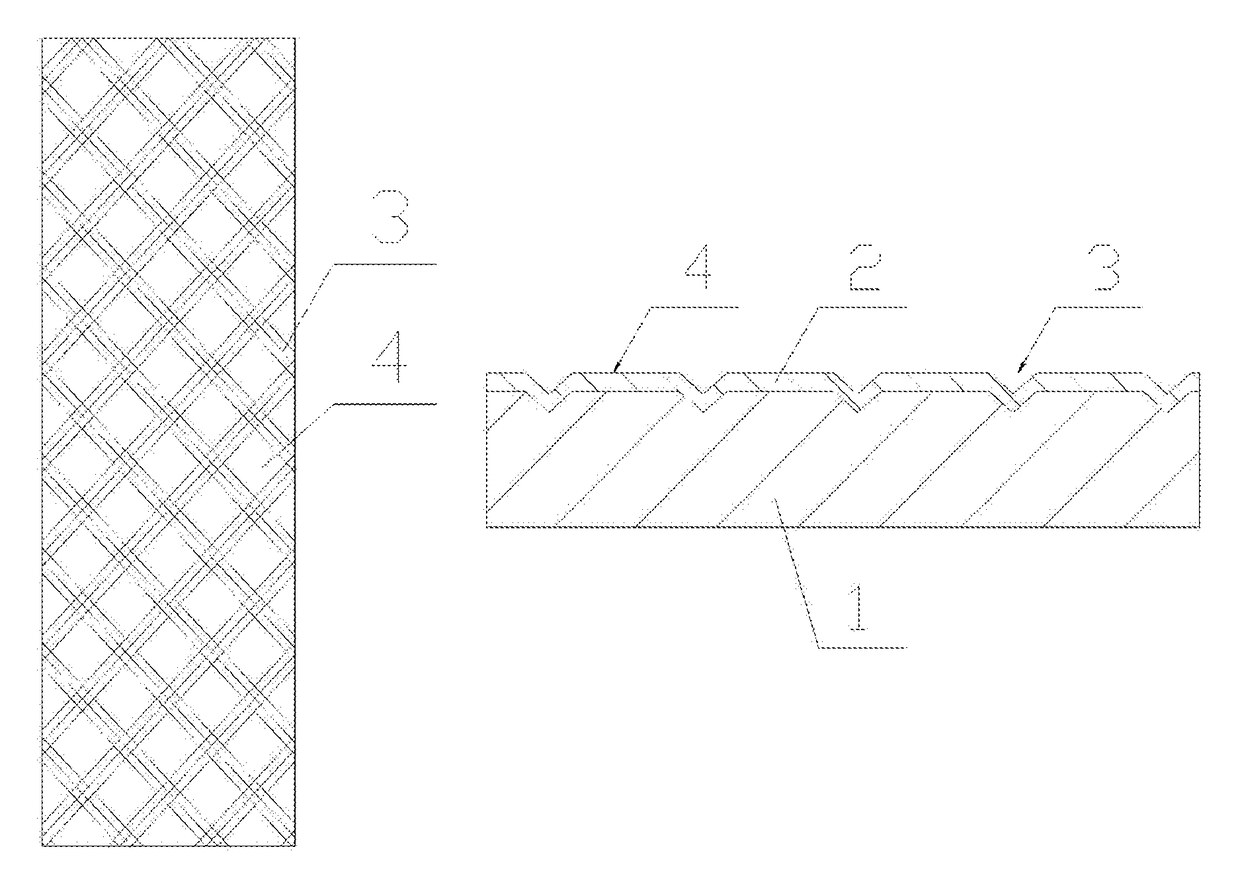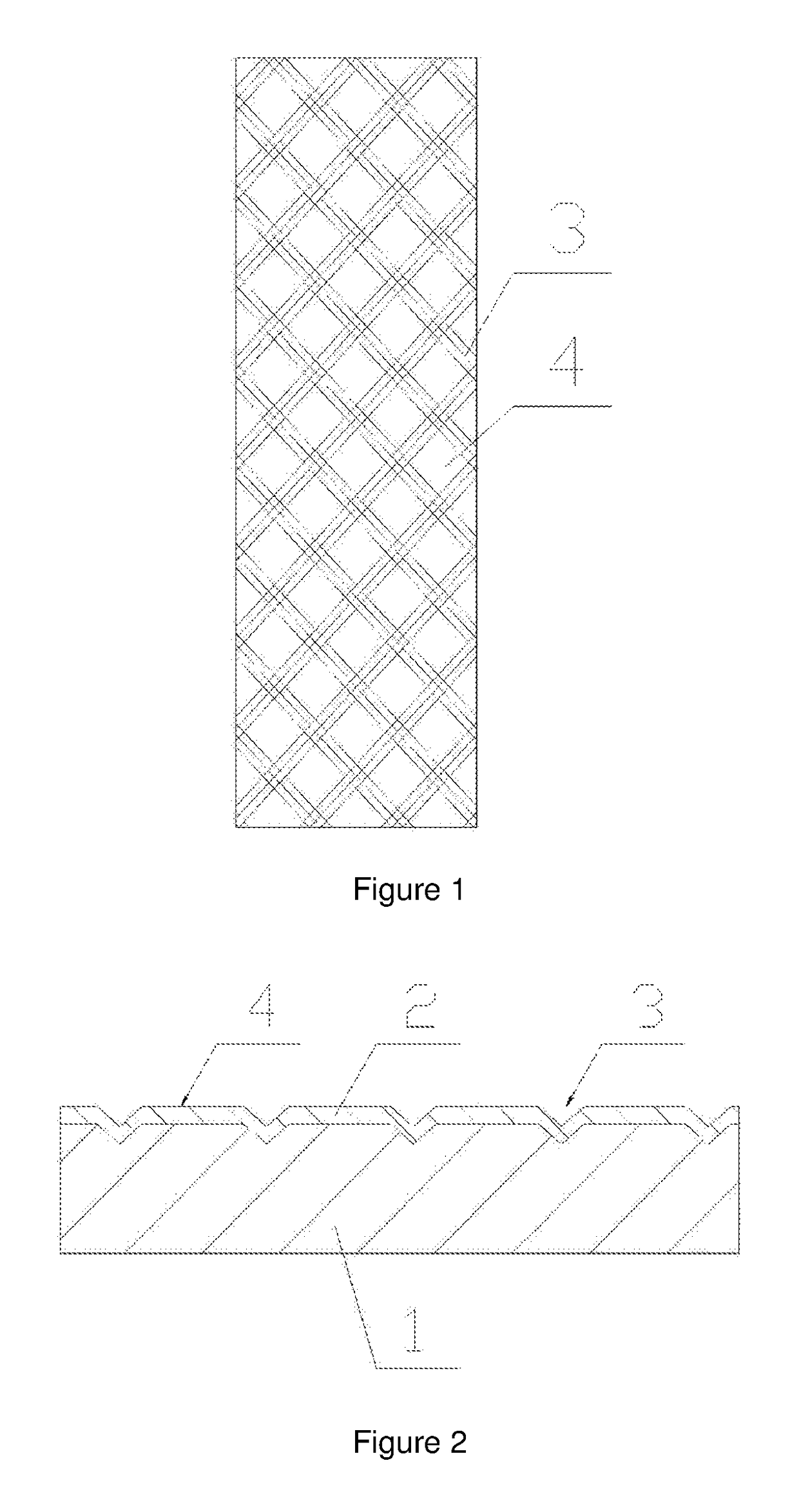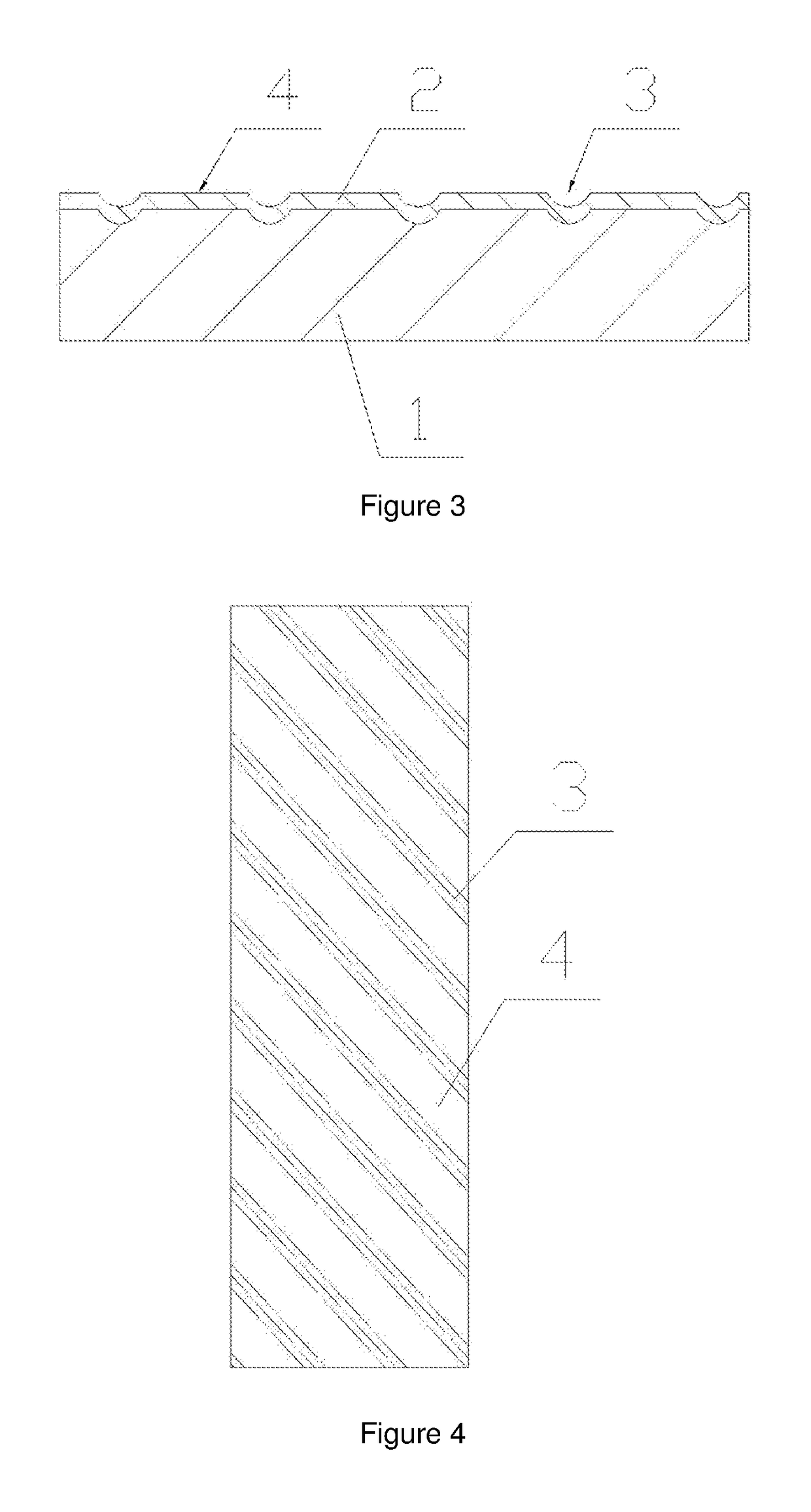Photovoltaic interconnect wire
a photovoltaic interconnect wire and interconnect wire technology, applied in the direction of insulated conductors, cables, conductors, etc., can solve the problems of reducing the soldering firmness the surface of the interconnect wire not having pits to protrude, and the inability to efficiently reflect sunlight, so as to improve the total reflection proportion of sunlight incident, the effect of reducing the loss of the effective cross-section area of the conductive base strip and increasing the overall output power of the photo
- Summary
- Abstract
- Description
- Claims
- Application Information
AI Technical Summary
Benefits of technology
Problems solved by technology
Method used
Image
Examples
embodiment 1
[0035]In this embodiment, TU1 oxygen-free copper is selected to form a conductive base strip with a thickness of 0.22 mm. Linear strip-shaped v-grooves 3 uniformly arranged as intersecting each other are pressed on one or two widthwise surfaces of the conductive base strip. A diamond-shaped flat base strip region 4 is formed between two adjacent grooves 3. A total area of the flat base strip regions 4 on one widthwise surface occupies 35% of a total area of the one widthwise surface of the conductive base strip 1. Each of the linear strip-shaped v-grooves 3 is inclined to both a length direction and a width direction of the conductive base strip 1, and the linear strip-shaped v-grooves 3 are inclined along only two different inclination directions. In the embodiment, linear strip-shaped v-grooves along the two inclination angles mirror each other with respect to the length direction of the conductive base strip 1, and the two inclination angles are substantially 60 degrees to the wi...
embodiment 2
[0045]This embodiment is substantially the same as Embodiment 1, except that the total area of the flat base strip regions 4 on one widthwise surface takes up 30% of the total area of the one widthwise surface of the conductive base strip 1. The grooves 3 are pressed on only one widthwise surface of the conductive base strip, and the depth of each groove 3 is substantially 5% of the thickness of the conductive base strip 1. Moreover, there is an inclination angle of substantially 15 degrees between an inclination direction of linear strip-shaped v-grooves inclined along the two directions and the width direction of the conductive base strip 1.
[0046]When 60 pieces of 156*156 polycrystalline silicon wafer are used to form a group of photovoltaic modules by using the interconnect wire of the invention, a power of such photovoltaic modules is 2.3 W higher than that formed by using a conventional interconnect wire. That is, the power is increased by 1%.
[0047]According to the method for m...
embodiment 3
[0050]This embodiment is substantially the same as Embodiment 1, except that the total area of the flat base strip regions 4 on one widthwise surface takes 70% of the total area of the one widthwise surface of the conductive base strip 1. The grooves 3 are pressed on both the widthwise surfaces of the conductive base strip 1, with the depth of the grooves 3 on one widthwise surface being 20% of the thickness of the conductive base strip 1, and the depth of the grooves 3 on the other widthwise surface being 30% of the thickness of the conductive base strip 1. Moreover, there is an inclination angle of substantially 75 degrees between an inclination direction of linear strip-shaped v-grooves inclined along the two directions and the width direction of the conductive base strip 1.
[0051]When 60 pieces of 156*156 polycrystalline silicon wafer are used to form a group of photovoltaic modules by using the interconnect wire of the invention, a power of such photovoltaic modules is 1.2 W hig...
PUM
| Property | Measurement | Unit |
|---|---|---|
| thickness | aaaaa | aaaaa |
| thickness | aaaaa | aaaaa |
| soldering force | aaaaa | aaaaa |
Abstract
Description
Claims
Application Information
 Login to View More
Login to View More - R&D
- Intellectual Property
- Life Sciences
- Materials
- Tech Scout
- Unparalleled Data Quality
- Higher Quality Content
- 60% Fewer Hallucinations
Browse by: Latest US Patents, China's latest patents, Technical Efficacy Thesaurus, Application Domain, Technology Topic, Popular Technical Reports.
© 2025 PatSnap. All rights reserved.Legal|Privacy policy|Modern Slavery Act Transparency Statement|Sitemap|About US| Contact US: help@patsnap.com



